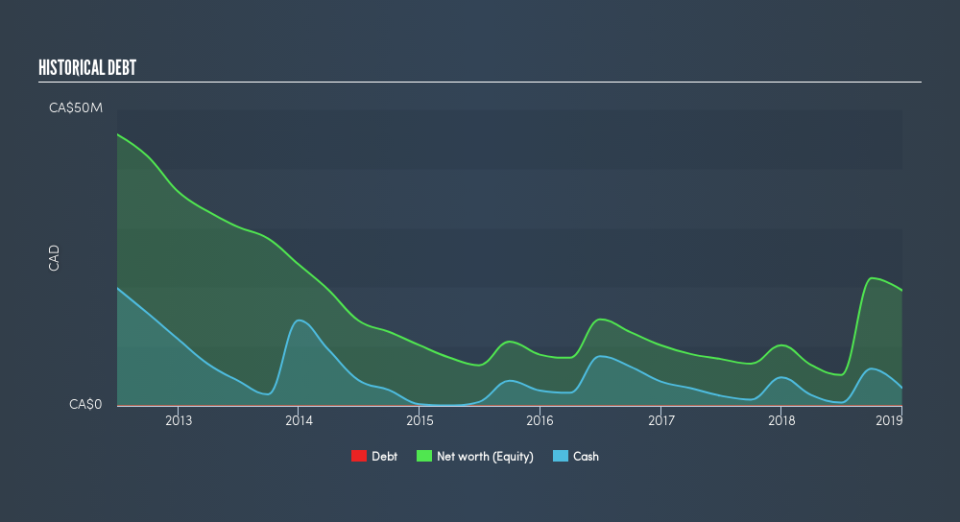Investors Who Bought Sandspring Resources (CVE:SSP) Shares Five Years Ago Are Now Down 83%

Some stocks are best avoided. It hits us in the gut when we see fellow investors suffer a loss. Anyone who held Sandspring Resources Ltd. (CVE:SSP) for five years would be nursing their metaphorical wounds since the share price dropped 83% in that time. And some of the more recent buyers are probably worried, too, with the stock falling 47% in the last year. Furthermore, it's down 44% in about a quarter. That's not much fun for holders. We note that the company has reported results fairly recently; and the market is hardly delighted. You can check out the latest numbers in our company report.
While a drop like that is definitely a body blow, money isn't as important as health and happiness.
Want to participate in a short research study? Help shape the future of investing tools and you could win a $250 gift card!
See our latest analysis for Sandspring Resources
With zero revenue generated over twelve months, we don't think that Sandspring Resources has proved its business plan yet. We can't help wondering why it's publicly listed so early in its journey. Are venture capitalists not interested? So it seems shareholders are too busy dreaming about the progress to come than dwelling on the current (lack of) revenue. It seems likely some shareholders believe that Sandspring Resources will find or develop a valuable new mine before too long.
As a general rule, if a company doesn't have much revenue, and it loses money, then it is a high risk investment. There is almost always a chance they will need to raise more capital, and their progress - and share price - will dictate how dilutive that is to current holders. While some such companies go on to make revenue, profits, and generate value, others get hyped up by hopeful naifs before eventually going bankrupt. Sandspring Resources has already given some investors a taste of the bitter losses that high risk investing can cause.
Sandspring Resources had net debt of CA$15,341,599 when it last reported in December 2018, according to our data. That makes it extremely high risk, in our view. But since the share price has dived -30% per year, over 5 years, it looks like some investors think it's time to abandon ship, so to speak. You can see in the image below, how Sandspring Resources's cash levels have changed over time (click to see the values).
It can be extremely risky to invest in a company that doesn't even have revenue. There's no way to know its value easily. What if insiders are ditching the stock hand over fist? I'd like that just about as much as I like to drink milk and fruit juice mixed together. You can click here to see if there are insiders selling.
A Different Perspective
Sandspring Resources shareholders are down 47% for the year, but the market itself is up 0.8%. Even the share prices of good stocks drop sometimes, but we want to see improvements in the fundamental metrics of a business, before getting too interested. Unfortunately, last year's performance may indicate unresolved challenges, given that it was worse than the annualised loss of 30% over the last half decade. Generally speaking long term share price weakness can be a bad sign, though contrarian investors might want to research the stock in hope of a turnaround. It is all well and good that insiders have been buying shares, but we suggest you check here to see what price insiders were buying at.
Sandspring Resources is not the only stock insiders are buying. So take a peek at this free list of growing companies with insider buying.
Please note, the market returns quoted in this article reflect the market weighted average returns of stocks that currently trade on CA exchanges.
We aim to bring you long-term focused research analysis driven by fundamental data. Note that our analysis may not factor in the latest price-sensitive company announcements or qualitative material.
If you spot an error that warrants correction, please contact the editor at editorial-team@simplywallst.com. This article by Simply Wall St is general in nature. It does not constitute a recommendation to buy or sell any stock, and does not take account of your objectives, or your financial situation. Simply Wall St has no position in the stocks mentioned. Thank you for reading.

